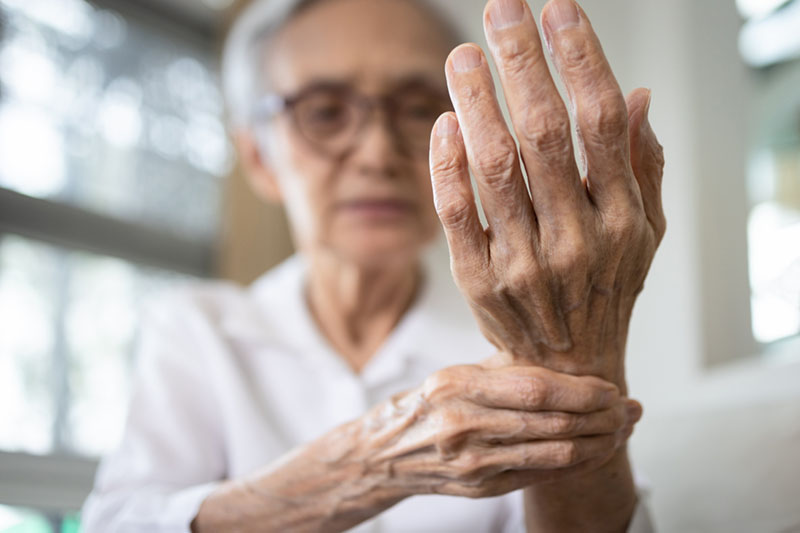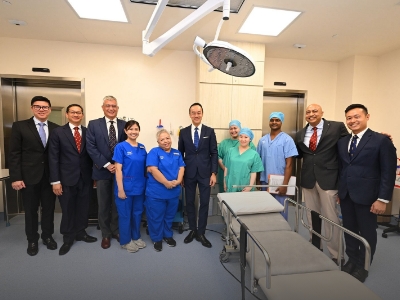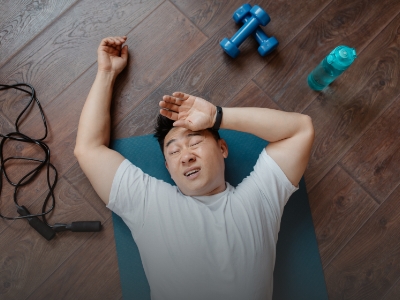Published on 21 December 2023
While joint cracking may be harmlessly satisfying, you’ll want to pay heed to crepitus, a sensation in the joints associated with arthritis.
It is quite common for our knees, knuckles, back and neck to make a cracking sound or “pop” as we bend and flex various parts of our bodies. In fact, it can be comforting. Rest assured that this habitual ‘cracking’ of joints isn’t inherently harmful in the long term.
Our joints are surrounded by synovial fluid, a thick viscous substance that reduces friction between cartilage and joints during movement. Overtime, gas around the joints builds up, forming small bubbles in the fluid. When we move, these bubbles may burst, resulting in an audible “pop”.
“The popping sounds that you make when you move the joints is due to a release of nitrogen bubbles which are dissolved in the fluid there,” explained Associate Professor Joseph Thambiah, Senior Consultant, University Spine Centre, Department of Orthopaedic Surgery, National University Hospital (NUH).
The risk of injury is extremely low if you’re cracking your own joints, said Prof Thambiah, as your body will be prepared and naturally “self-guarding” against moves that will cause injury. However, if someone else is helping you to crack your joints — perhaps a barber at the end of a haircut, or a masseuse performing manipulations — the risk of injury is significantly higher.
Watch out for crepitus
The cracking of joints is not to be confused with crepitus, a sensation that can occur when you are moving a joint or turning your neck. This, Prof Thambiah cautioned, may be a cause for concern.
“As you turned your neck (for instance), you might have felt a grinding or grainy, creaky sensation. Sometimes, it is audible,” said Prof Thambiah, describing crepitus.
Crepitus that does not cause pain usually indicates that you have some form of arthritis — inflammation of the joints. While further medical examination may not be necessary, you will need to start taking better care of your joints. This would involve staying away from activities that burden them. “For example, if it's your knees, you may want to avoid joint-loading activities like jogging or running,” advised Prof Thambiah.
“You also need to start making sure that you are keeping the joint mobile with flexibility and strengthening exercises,” he added. Such exercises can help to alleviate joint stiffness as well as provide better support and stability by targeting muscles surrounding the joints.
When should you see a doctor then? According to Prof Thambiah, it is when the crepitus is accompanied by symptoms such as swelling, pain and dull aching around the joint, or if it starts limiting your movement.

Conditions associated with crepitus
When crepitus is accompanied by pain, it means that there is significant arthritis. The latter can be a serious condition if left untreated, resulting in severe joint pain, loss of mobility and joint deformity.
The most common form of arthritis that causes crepitus is osteoarthritis, a type of degenerative arthritis that is associated with aging and joint overuse. In this case, mechanical and biochemical factors combine to cause deterioration of cartilage.
The other cause — though less common — is rheumatoid arthritis, which happens when a chronic autoimmune disease causes the immune system to attack the body’s own tissue. This leads to pain, swelling, stiffness and loss of function in joints.
As osteoarthritis is degenerative (i.e. age-related damage to the cartilage and the joints), it cannot be prevented. “You can’t reverse or stop aging, but you can mitigate the effects of it by maintaining good joint health,” said Prof Thambiah. (See sidebar for tips.)
While most cases of crepitus can be eased and managed with non-invasive treatments, some patients with serious cases of crepitus may require surgery. Surgical methods that may be recommended include:
Arthroscopy: This involves inserting instruments through small incisions to access the joint and repair damage.
Debridement: A surgical procedure to remove damaged cartilage and tissue.
Joint replacement: This involves replacing the entire joint or parts of the damaged joint with artificial implants.

How to maintain good joint health
- Do gentle exercises that don’t overload the joints: Activities such as tai chi, qigong and swimming help strengthen the muscles without overloading the joints.
- Keep flexible and mobile: Remember to stretch regularly, especially if your job is desk-bound.
- Manage your weight: Maintaining a good body mass index (BMI) can ease the stress on your joints. Weight-bearing joints tend to degenerate faster in overweight patients than in those who have a healthy weight.
- Consider research-backed supplements: Turmeric and ginger extracts, for instance, are natural anti-inflammatories for the joints. Ultimately, ensure that the supplements and dosage you’re taking are scientifically researched.
In consultation with Associate Professor Joseph Thambiah, Senior Consultant, University Spine Centre, Department of Orthopaedic Surgery, NUH.




